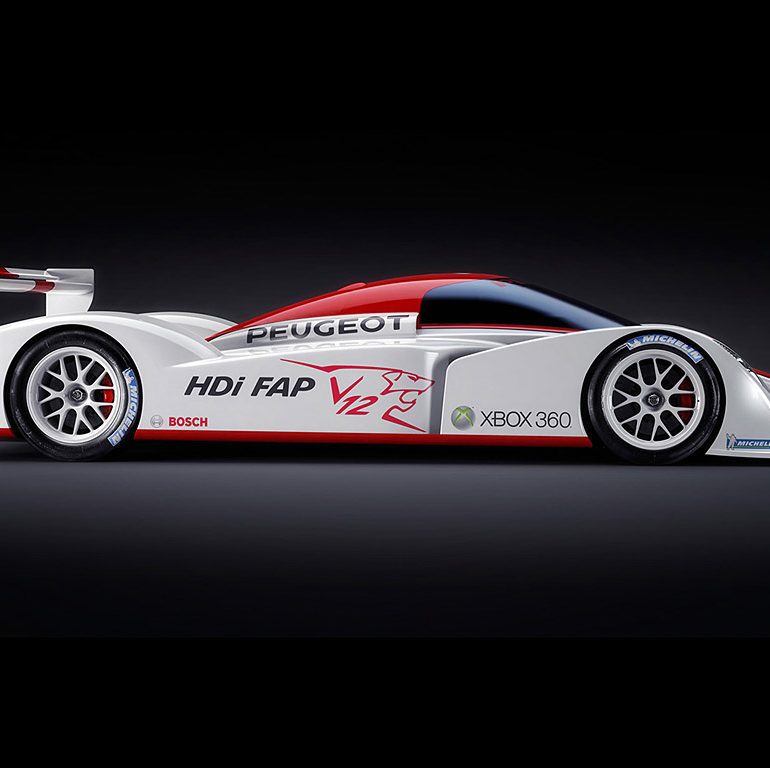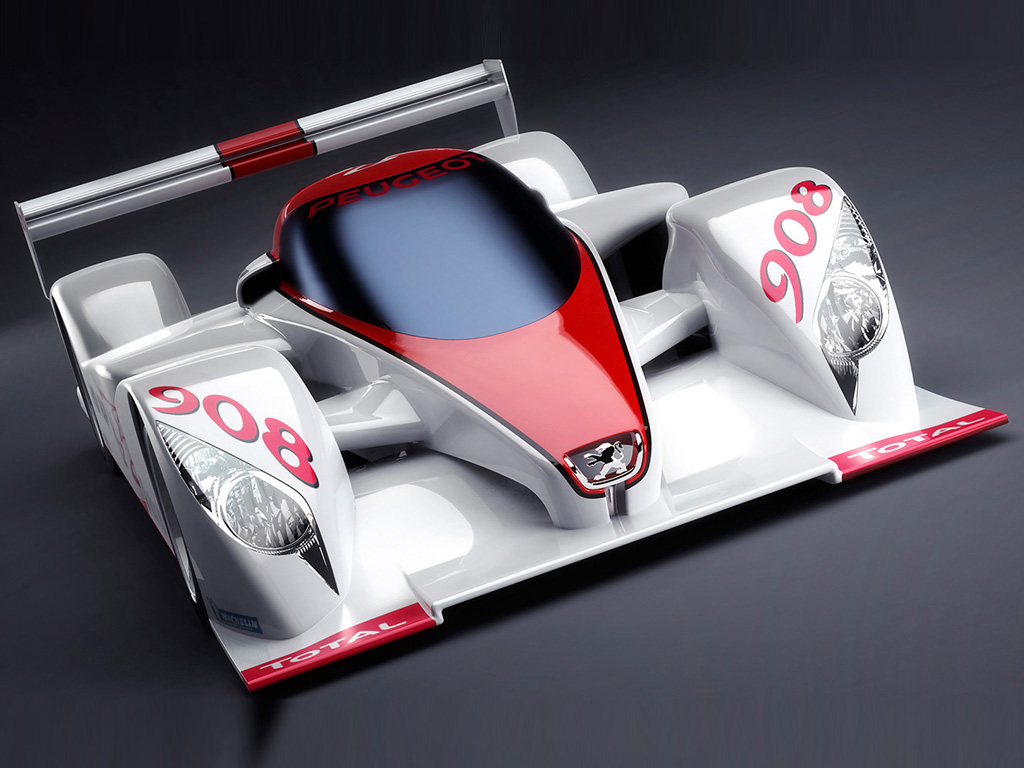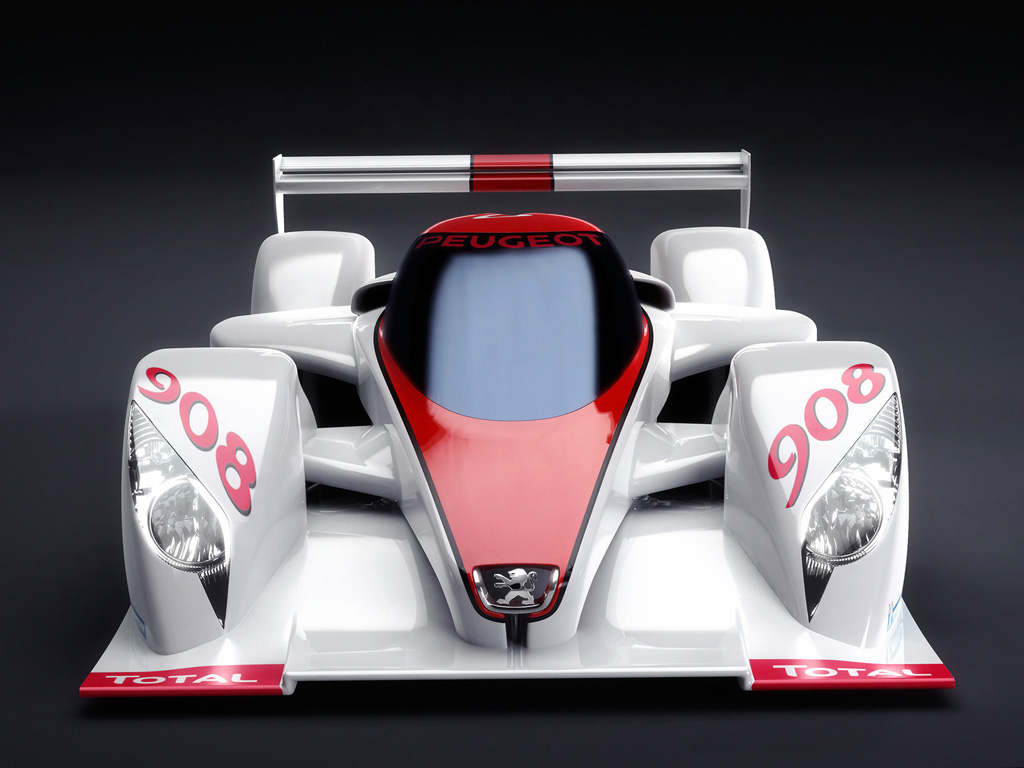2006 Peugeot 908 Mock-Up
September 28th, 2006- In June 2005, Peugeot announced its decision to accept a new technological challenge: to win one of the world’s most prestigious and demanding motor races, the Le Mans 24 Hours, with a car powered by an HDi diesel engine equipped with a diesel particulate filter system (DPFS).
The car that will display the Peugeot colours in the Le Mans 24 Hours race and in the Le Mans Series in 2007 will be the Peugeot 908. The choice of number comes from, 90 designating an exceptional Peugeot model and 8 the next number in sequence after the 907 concept car.
The choice of body style is that of a closed car, in line with changes to the regulations announced by the Automobile Club de l?Ouest on 16 June 2006.Equally there was also a desire to keep a link with the two-times winner of the Le Mans 24 Hours in 1992 and 1993, the Peugeot 905.
While from a technical point of view this solution presents a number of drawbacks (weight, height of the centre of gravity, operational problems), the Peugeot Sport team felt that it also offers advantages, particularly in terms of chassis rigidity and aerodynamics.
The monocoque body is made of carbon and presents a truly closed structure, contrary to the 905, which was a racing car with a detachable tubular rollover bar. This type of structure offers strong natural rigidity and allows the weight of the monocoque body to be optimised.
Created from scratch at the beginning of 2006, Peugeot Sport?s aerodynamics department had the difficult task of designing in just a few weeks an exterior body that was both original and aerodynamically efficient.
The car’s profile results not only from the necessary compromise between aerodynamic efficiency and drag, but also the need to provide optimum airflow to the different radiators and intercoolers located within the generously dimensioned bodywork.
The chosen engine architecture is a 100� V12 with a capacity of 5.5 litres. This is the maximum capacity permitted by the regulations and was chosen due to its greater internal airflow at low engine speeds. It also gives potential future development opportunities to use different grade fuels.
The choice of a twelve cylinder engine helps keep the cylinder bore diameter very close to that of a production series engine. In doing so, Peugeot can call on its extensive knowledge of diesel combustion and also ensure the engine has a reasonable piston stroke. The V12 architecture, well known for its good balance, also reduces vibrations to a minimum.
The 100 Degree V angle, like the V12 architecture, makes it possible to lower the height of the centre of gravity without affecting the engine’s torsional rigidity. Two diesel particulate filters are located at the end of each exhaust system and guarantee smoke-free operation of the engine under all conditions.
Story by Peugeot
In Detail
| type | Concept / Prototype Car |
| built at | France |







